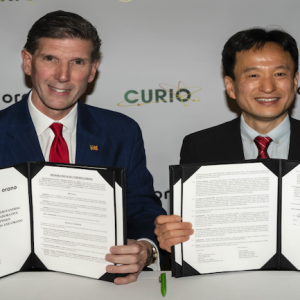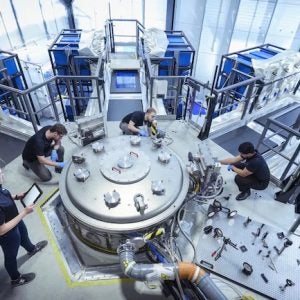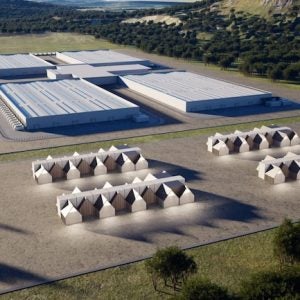 The world's first Generation 4 NPP – China's HTR-PM demonstration project at Shidaowan in Shandong province – has begun commercial operation, according to the China National Energy Administration and China Huaneng Group.
The world's first Generation 4 NPP – China's HTR-PM demonstration project at Shidaowan in Shandong province – has begun commercial operation, according to the China National Energy Administration and China Huaneng Group.
The project is owned by a consortium led by China Huaneng (47.5%) with China National Nuclear Corporation's subsidiary China Nuclear Engineering Corporation (32.5%) and the Institute of Nuclear and New Energy Technologies (INET) of Tsinghua University (20%), which is the head of research and developments. Construction began in December 2012 and unit 1 achieved criticality in September 2021 followed by unit 2 two months later. Unit 1 was connected to the grid in December 2021 and both units achieved full power in December 2022.
The HTR-PM project involves two small 250MW high temperature gas-cooled reactors (HTGRs) that drive a single 210MW turbine. The HTGR is an advanced reactor that features fourth-generation technology, and is a key development direction for nuclear power, said Zhang Zuoyi, chief designer of the HTGR programme and Dean of INET. The reactors are inherently safe excluding the possibility of a meltdown or leak of radioactive materials even in the event of a complete loss of cooling capacity, without any intervention, he added.
Helium is used as a coolant, and graphite is used as a moderator. The core of each reactor is loaded with more than 245,000 spherical fuel elements ("pebbles"), each 60 mm in diameter and containing 7 grams of fuel enriched to 8.5%. Each micro-pebble has an outer layer of graphite and contains about 12,000 four-layer ceramic-coated fuel particles dispersed in a matrix of graphite powder. The fuel has high safety characteristics and has been proven to remain intact and continue to contain radioactive contents at temperatures up to 1620°C, which is much higher than the temperatures that can occur even in extreme emergencies,
The HTR-PM project follows China's HTR-10, a 10 MW experimental high-temperature gas-cooled reactor at INET, which went online in 2000 and reached full capacity in 2003. In addition to the HTR-PM, China is developing a larger version, the HTR-PM600, with a single 650MW turbine powered by six small reactors.
More than 500 companies specialising in design & development, engineering construction, equipment manufacture, production & operation participated in the project. The localisation rate of the equipment was 93.4%, Zhang Yanxu, general manager of Huaneng Shidao Bay Nuclear Power Company told China Media Group (CMG). After completing a 168-hour stable operation test, the project was officially put into commercial operation symbolising China's global leadership in the field of HTGR technology, he added. Zhang said the project team developed over 2,200 sets of unique equipment and developed six key technologies for the plant.
In addition to producing green electricity, the high-temperature steam generated by nuclear reactors can also be widely used for heating, hydrogen production, chemical industry, metallurgy and other industries, said Zhang noted. These will better help to optimize China's energy structure and further achieve the country's "dual carbon" goals, which aim to peak carbon dioxide emissions by 2030 and achieve carbon neutrality before 2060, he said.
INET’s Zhang Zuoyi said modular high-temperature gas-cooled reactors can provide high-parameter industrial steam, achieve combined heat and power, and can also be combined with multiple modules, which will play a strategic role in industrial heating and hydrogen production. Tsinghua University has carried out research on the prospects for industrial promotion such as hydrogen production and development. “It is already commercially competitive and is expected to become a major innovative industry that helps China and the world's carbon peak carbon neutrality,” he noted.






